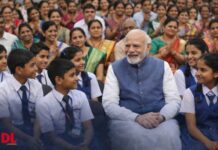So how do you tell a Brazilian story in Hindi?
How do you use storytelling to teach a child to read or learn a language? How do you make reading educational as well as entertaining for kids? BookBox does just that! Based on what is known as Same Language Subtitling (SLS), BookBox is a essentially a web-based jukebox of digital books in 18 languages from round the world. SLS essentially involves same language (audio) subtitling of the audio-visual program. In Book box SLS has been integrated into a book/story.
BookBox synchronizes the text, audio, and visual media to create an ducational and entertaining reading experience for children. Children can relate the phonetic sounds with the visual subtitles to accelerate reading skill evelopment. Sophisticated eye-tracking research has proved that when SLS is integrated into a “book”, reading happens utomatically and subconsciously thus making stories not just interesting but also educational. BookBox aims to not only enhance children’s basic literacy, but also facilitate their proficiency in foreign languages. BookBox was a result of experimentation with SLS-an experiment that began and resulted in a project that taught early literates and illiterates to read while watching popular Hindi film songs in India. The above may sound very simple (or too complicated!) but for Dr Brij Kothari SLS has been a tool to address mass illiteracy in India. In 1996, he hit upon the idea to use SLS while watching a Spanish film to improve his Spanish. In his own words –“I was watching a Spanish film with friends to improve my Spanish. The Spanish movie had English subtitles, and I remember commenting that I wished it came with Spanish subtitles, if only to help us grasp the Spanish ialogue better. I then thought, ‘And if they just put Hindi subtitles on Bollywood songs in Hindi, India would become literate.’ That idea became an obsession. It was so simple, intuitively obvious, and scalable in its potential
to help hundreds of millions of people read — not just in India, but globally”. Now a decade later Dr Kothari explains, “The idea of SLS tends to divide people into two camps – those who think it’s too simple to achieve anything, and those who understand that its simplicity and ability to integrate into popular culture can fundamentally alter the approach to the massive problem of low literacy”. What exactly is SLS? In a research paper on the same subject titled ‘Reading Out of the “Idiot Box”: Same-Language Subtitling on Television in India’ written by Brij Kothari, Avinash Pandey and Amita R. Chudgar, SLS is explained as ‘the idea of subtitling motion media in the same language as the audio. The audio track is reproduced verbatim and in a synchronized manner’. The paper further clarifies ‘SLS needs to be distinguished from Same Language Transliteration (SLT). An example of SLS is video in Hindi, subtitled word for word in Hindi (which uses the Devanagari script). The same media, subtitled in the Hindi language using the Roman script, is not SLS but SLT. However, both SLS and SLT may be useful for criptacy as long as the script is meaningful for the viewing neo-semi-scriptates (literates)…SLS has been primarily directed: to promote scriptacy skill improvement in the first language among early scriptates’. Those in India who call recall ‘Rangoli’ the program featuring Hindi firm song sequences (aired on Sunday mornings in the National channel, Doordarshan), SLS features as Hindi subtitles (in Devanagari script) to Hindi songs. Starting this experiment with Chitrahar another Hindi song based program, a simple addition of SLS gave weekly reading practice to almost 80-100 million early-literates in India using TV. So does SLS really help? Studies have evidences that SLS raises the literacy skills of all early literates on a mass scale, through lifelong practice, increases the frequency of literacy practices among: early literates, not in school (children and adults), and emergent literates in schools or literacy enters. SLS also motivates nonliterates
toward literacy, through entertainment and popular culture, makes reading an
automatic and reflex phenomenon in everyday life, creates a reading culture and an environment for reading. Dr Kothari assures that SLS is cost effective offers a financially sustainable model for lifelong literacy skill improvement.
Why BookBox? Because children love stories! Because SLS makes reading inescapable! BookBox builds on the children’s inherent interest in stories. With SLS that subtitles stories word to word, children develop reading skill through
this text-sound correspondence. BookBox also distinguishes itself by the cultural diversity of its story content by collecting stories from all around the
world or engaging local authors to create or adapt stories based on their individual cultures and traditions. In BookBox the visual remain the same
while the narrator tells the story in different languages. Thus a Brazilian folk story can be told in Hindi or Japanese and vise-versa! Thus while enhancing the
entertainment value of storytelling through multimedia, Book box also provide automatic reading practices for children. The stories are simple and they teach a moral. Available in DVDs, BookBox stories are titled in English as ‘the first Christmas, Four friends, Boo in the shoo, Turtle’s Flute, Elephant Goes To City, The First Well. BookBox got special mention in the category of best e-content in e-learning in Manthan awards (www. manthan awards.com) in 2005
























